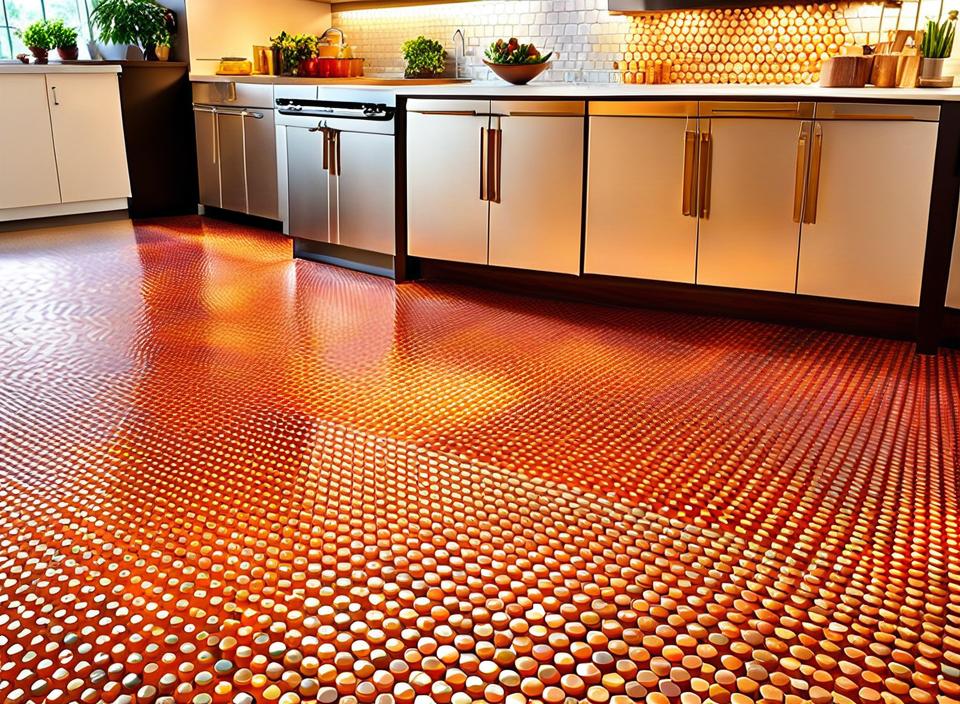Penny Tiles - An Affordable Way To Remodel Your Kitchen Floor
With their vintage charm and visual interest, penny tile floors can breathe new life into any outdated kitchen. Installing a penny tile floor is an easy and budget-friendly way to give your kitchen an instant facelift.
Penny tiles, also known as mosaic tiles or subway tiles, are small, round tiles typically 1 inch or less in diameter. Their name comes from their resemblance to old British pennies. Dating back to the Victorian era, penny tiles add an old-world feel with their unique, scales shapes and patterns.
The Draw of Penny Tiles for Kitchen Floors
There are many reasons penny tile floors are having a resurgence in popularity for contemporary kitchen designs.
Penny tiles create visual interest and texture from their small scale and round edges. The repetitive circular shapes form an eye-catching geometric pattern. Unlike ordinary square tile, penny tiles make the floor a focal feature.

The vintage vibe of penny tile gives modern kitchens a retro twist. From farmhouse to industrial chic, penny tiles pair well with many aesthetic styles.
Penny tile floors are very durable when properly installed and cared for. The small grout lines do require more cleaning maintenance.
Design Inspiration for Penny Tile Kitchen Floors
While penny tile backsplashes may still reign supreme, designers are embracing penny tile floors in creative new ways.
For a unified look, install matching tile on the floors, backsplash and countertops. Contrasting grout lines keeps each surface distinctive.
Pairing penny tile floors with vintage-look cabinets and fixtures enhances the retro charm. Painted in bold, contrasting colors adds retro flair.
Large pattern penny tile floors make small kitchens appear bigger. A floor with contrasting borders frames the space.
Pros of Penny Tile Floors
- Attractive, vintage appearance
- Visually widen and brighten
- Durable with proper installation
- Many color and pattern options
- Relatively affordable material cost
Cons to Consider
- Grout requires more cleaning
- Small size equates to longer install
- Easy to chip edges and crack
- DIY is challenging for beginners
How to Install Penny Tile Floors
Installing a penny tile floor takes precision and patience, but can absolutely be a DIY project to save on labor costs.
Choosing Your Tile
The two most common materials for penny tiles are porcelain and ceramic:
- Porcelain - More durable and resistant to staining/moisture. Ideal for floors.
- Ceramic - More prone to chipping and cracks. Budget option.
Glass penny tile is also available for an eye-catching look. Always inspect tiles before purchasing.
Preparing the Subfloor
Ensuring a smooth, structurally sound subfloor is crucial for durability. The floor may need backerboard installed to provide extra stability.
Patterns and Layout
Dry laying the tile first lets you map out the most appealing pattern and layout. Herringbone and basketweave patterns add visual interest.
Grouting Considerations
Sanded grout is too abrasive for penny tiles. Use unsanded grout and seal it to prevent staining between tiles.
Penny Tile Costs and ROI
One major appeal of penny tile is its relatively low cost compared to materials like stone or wood.
The porcelain or ceramic tile itself ranges from $2-10 per square foot. Professional installation averages $6-8 per square foot.
In total, you can expect to invest $5-20 per square foot for a new penny tile floor. Porcelain costs more than ceramic.
This affordable investment can greatly boost your home's value. Many realtors consider kitchen updates like new tile flooring one of the top renovations for maximizing ROI.
While durable, penny tile does require some ongoing maintenance to look its best.
Be diligent about resealing the grout every 1-2 years to prevent staining. PH-neutral cleaners are safest for regular mopping.
Take care not to drop heavy objects that may chip tile edges. Cracked or damaged tiles can be patched or replaced as needed.
With proper installation and care, your penny tile floor can remain an eye-catching focal point in your kitchen for years to come!